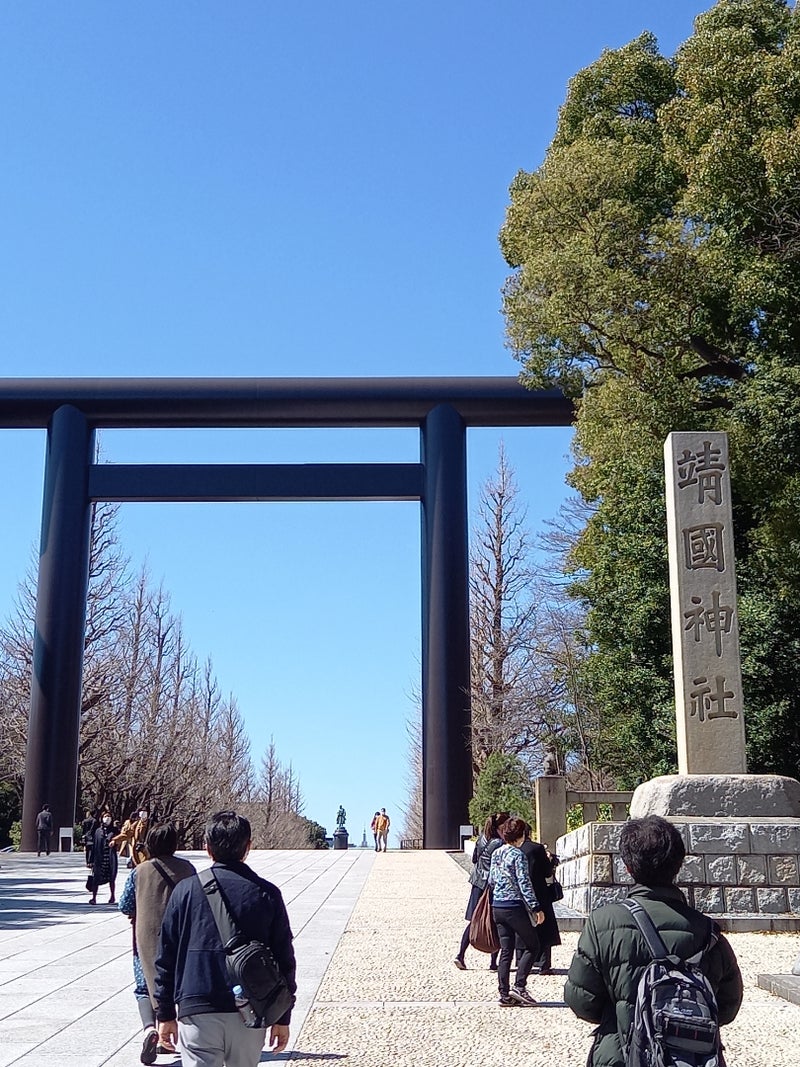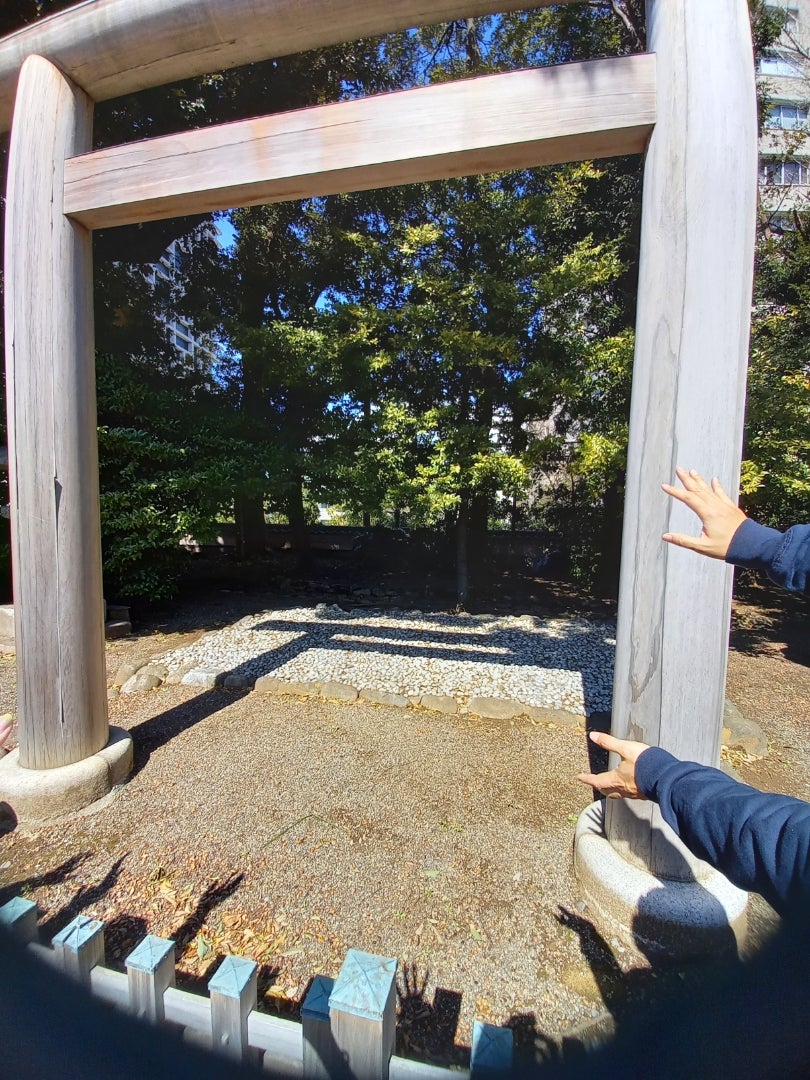東京都千代田区 靖国神社
御祭神 ペリー来航後以来の、国家のために殉難した英霊 246万6584。
北白川宮能久親王
北白川宮永久王
日本の旧植民地出身の軍人・軍属
靖国神社というと、A級戦犯ですが
政治論は排して、スピリチュアル的にうがった見方で書いてます。
靖国神社の祭神になるには、一定の基準(事変ごとにことなる)がありますが
拝殿左にある鎮霊社には
一般の戦争被害者、常陸丸のイギリス搭乗員など
日本のために殉難された外国人も祀られています。
本殿では鎮霊できない御霊ということです。
靖国神社とは
「吾以靖國也(吾以つて国を靖んずるなり)」から来ています。
それ以前は東京招魂社でした。
「在天の神霊を一時招祭するのみなるや聞こえて社号としては妥当を失する」
とのことで改称されました
とはいえ、靖国神社は招魂にこだわります。
江戸時代までは
日本では死者に対する招魂は禁忌でした。
魂を鎮める「鎮魂」が行われていました。
神社の奥に招魂斎庭という儀礼場跡があります。
合祀する魂を前夜に招魂斎庭に集め
翌日に本殿に合祀します。
支那事変前までは直接合祀していましたが
数が多くなり手狭になりこちらに斎場を作りました。
現在は駐車場となっていますが強いエネルギーを放っています。

本来日本では
招魂は衰弱したひとを活性化する方法です。
病気や出産などで離れそうな魂を呼び戻すものです。
意味としては道教の「身既に死して神以て霊・魂魄毅として鬼雄(=日本では神)となる」に近いと考えらます。
「魂の離散を恐れ呼び戻し神とする」という意味でしょう。
神とするために活性化してもらうという考え方もできます。
菅原道真公の天神など
怨霊と言われたものも強いエネルギーとして
取り入れていった歴史があります。
殉難者を神として力に変えて国を守ってもらうのでしょう。
明治以後の国策神社はどこも強いエネルギーを発しています。
道教の流れをくむ陰陽師が頑張ったという資料もあるようです。
誰がどのようにしたのか裏の歴史も知りたいものです。
アクセス
JR
・中央・総武線各駅停車「飯田橋駅(西口)」、「市ヶ谷駅」より徒歩(約10分)
地下鉄
・東西線/半蔵門線/都営新宿線「九段下駅(出口1)」より徒歩(約5分)
・有楽町線/南北線/都営新宿線「市ヶ谷駅(A4出口)」より徒歩(約10分)
・東西線/有楽町線/南北線「飯田橋駅(A2出口、A5出口)」より徒歩(約10分)
バス
・九段下~高田馬場系統「九段上停留所」より徒歩(約1分)
Tokyo, Chiyoda Ward, Yasukuni Shrine
The enshrined deities are the spirits of those who have sacrificed themselves for the nation since Perry’s arrival, totaling 2,466,584. They include Prince Yoshihisa Kitashirakawa, King Eikyu Kitashirakawa, and military personnel and staff from Japan’s former colonies.
When people think of Yasukuni Shrine, they often think of Class A war criminals. However, this text is written from a spiritual perspective, avoiding political arguments.
There are certain criteria (which vary depending on the incident) to become a deity of Yasukuni Shrine.
On the left side of the main hall, there is a shrine called the Chinkonsha, where ordinary war victims, British crew members of the Hitachi Maru, and foreigners who have died for Japan are also enshrined. These are spirits that cannot be pacified in the main shrine.
The name “Yasukuni Shrine” comes from the phrase “I pacify the country.” Before that, it was called Tokyo Shokonsha. It was renamed because it was deemed inappropriate to temporarily invite the spirits of the heavens to a place called a shrine.
However, Yasukuni Shrine is particular about inviting spirits. Until the Edo period, inviting spirits was taboo in Japan. Instead, “Chinkon,” or pacifying spirits, was practiced.
In the back of the shrine, there is a ceremonial site called the Shokon Sai Tei. The spirits to be enshrined are gathered in the Shokon Sai Tei the night before and enshrined in the main shrine the next day.
Before the Sino-Japanese War, they were directly enshrined, but as the number increased and space became tight, a ceremonial site was created here. It is now a parking lot, but it emits strong energy.
Originally in Japan, inviting spirits is a way to revitalize weakened people. It is something to call back souls that are likely to leave due to illness or childbirth.
In terms of meaning, it is close to the Taoist concept of “the body is already dead, and the spirit becomes a ghost with courage and will (in Japan, a god).” It probably means “fear of the dispersion of the soul, call it back and make it a god.”
You can also think of it as a way to activate the soul to make it a god. There is a history of incorporating things that were said to be vengeful spirits as strong energy, such as Sugawara no Michizane’s Tenjin. It seems that the martyrs are made gods and their power is used to protect the country.
Since the Meiji era, all state policy shrines emit strong energy.
It seems that there are also documents saying that Onmyoji, who follows the flow of Taoism, worked hard.
I would like to know the hidden history of who did what.
Access JR
Central/Sobu Line local service: About a 10-minute walk from Iidabashi Station (West Exit) or Ichigaya Station. Subway
Tozai Line/Hanzomon Line/Toei Shinjuku Line: About a 5-minute walk from Kudanshita Station (Exit 1).
Yurakucho Line/Namboku Line/Toei Shinjuku Line: About a 10-minute walk from Ichigaya Station (Exit A4).
Tozai Line/Yurakucho Line/Namboku Line: About a 10-minute walk from Iidabashi Station (Exits A2 and A5). Bus
Kudanshita to Takadanobaba route: About a 1-minute walk from the Kudan Ue bus stop.
|
|







![[商品価格に関しましては、リンクが作成された時点と現時点で情報が変更されている場合がございます。] [商品価格に関しましては、リンクが作成された時点と現時点で情報が変更されている場合がございます。]](https://hbb.afl.rakuten.co.jp/hgb/3a461f49.f522373f.3a461f4a.5f51527a/?me_id=1215297&item_id=10153932&pc=https%3A%2F%2Fthumbnail.image.rakuten.co.jp%2F%400_mall%2Fbellevie-harima%2Fcabinet%2Fsale%2F0307%2Fymj%2F5024_s01.jpg%3F_ex%3D240x240&s=240x240&t=picttext)



コメント
Interesting post. This is very insightful. Thanks for sharing